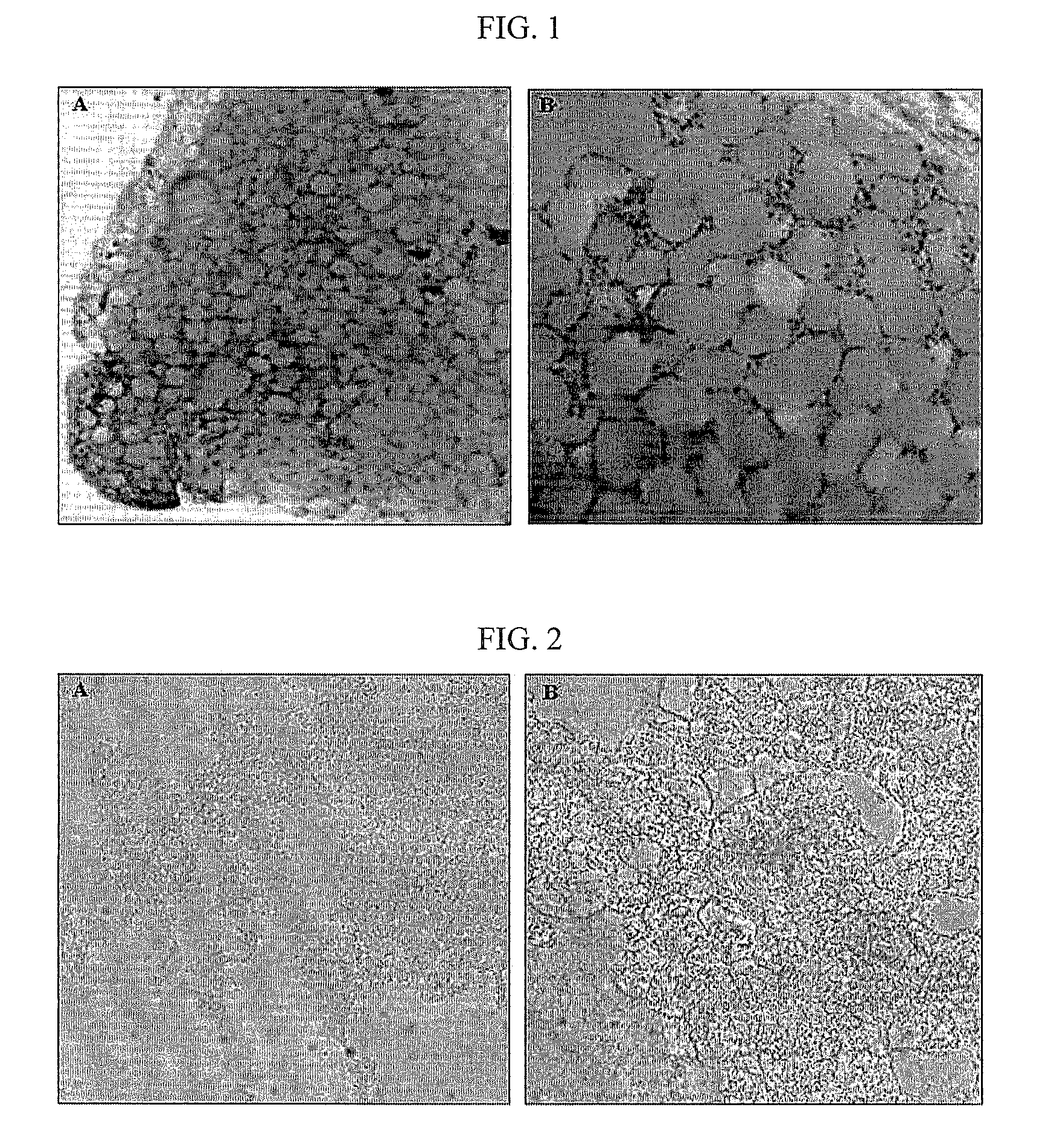Lipid-free scaffolds for human volume replacement or cell culture and use thereof
a technology of human tissue volume replacement and lipid-free scaffolds, which is applied in the field of lipid-free scaffolds for human tissue volume replacement or cell culture, can solve the problems of gradual volume reduction, extended time consumption, and complicated process of process
- Summary
- Abstract
- Description
- Claims
- Application Information
AI Technical Summary
Benefits of technology
Problems solved by technology
Method used
Image
Examples
example 1
Preparation of Lipid-Free Powder
[0054]1-1 (Preparation Example 1)
[0055]Fat tissue discarded after extracted from an obese patient was fragmented and subjected to sonication(110W) 10 to 15 times at 60˜80° C. for 10 minutes in distilled water to isolate lipids.
[0056]The isolated lipids and fat tissue, from which lipids were not isolated, were filtered or centrifuged at 3500 rpm for 5 minutes, followed by washing with 70% ethanol and distilled water, respectively.
[0057]The lipid-free fat tissue fragments were lyophilized or air dried and sterilized using radiation, thereby obtaining a lipid-free powder.
[0058]1-2 (Preparation Example 2)
[0059]Fat tissue discarded after extracted from an obese patient was fragmented and lipids were isolated from the fat tissue fragments by adding distilled water to the fragments to spray using high pressure nozzle.
[0060]The isolated lipids and fat tissue, from which lipids were not isolated, were filtered or centrifuged at 3500 rpm for 5 minutes, followed...
example 2
[0070]The lipid-free powder prepared in Example 1-1 was stained using oil red O and fat tissue before the powderization process of Example 1-1 was used as a control group.
[0071]As a result, it was observed that the control group contained lipids(see FIG. 1) while lipids were completely removed from the lipid-free powder prepared in Example 1-1 (see FIG. 2).
[0072]As illustrated from this experiment results, it is understood that the lipid-free fat tissue of the present invention can be used as scaffolds for human tissue volume replacement.
[0073]Moreover, the lipid-free fat tissue according to the present invention is in the form of micropowder so that it can be used as scaffolds for cell culture, as shown in FIG. 2.
PUM
 Login to View More
Login to View More Abstract
Description
Claims
Application Information
 Login to View More
Login to View More - R&D
- Intellectual Property
- Life Sciences
- Materials
- Tech Scout
- Unparalleled Data Quality
- Higher Quality Content
- 60% Fewer Hallucinations
Browse by: Latest US Patents, China's latest patents, Technical Efficacy Thesaurus, Application Domain, Technology Topic, Popular Technical Reports.
© 2025 PatSnap. All rights reserved.Legal|Privacy policy|Modern Slavery Act Transparency Statement|Sitemap|About US| Contact US: help@patsnap.com

